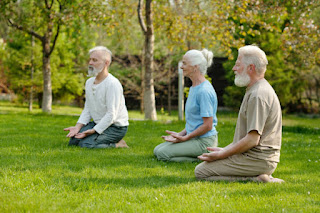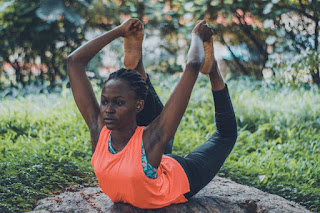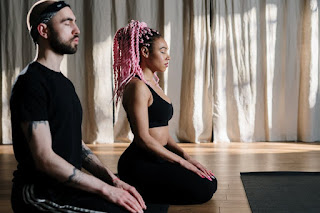Visualizing Success: Using Meditation to Stay Focused on Your Goals
Visualizing Success: Using Meditation to Stay Focused on Your Goals
As we step into a new year, many of us are inspired to set ambitious goals and work towards meaningful transformations. However, sustaining the motivation to achieve these goals can be daunting, especially as the initial excitement wanes. What if there were a way to keep that motivation alive and create a mental environment that fosters consistent progress? Enter visualization meditation—a scientifically backed practice that transforms abstract goals into compelling mental realities, propelling us forward with greater clarity and determination. This article will explore the mechanisms behind visualization, offer practical meditation techniques, and integrate yoga to build a holistic approach to achieving long-term success.
The Science Behind Visualization and Goal Achievement
The human brain is wired to respond to images, sensations, and experiences, whether they are real or vividly imagined. By leveraging the brain’s capacity for visualization, we can improve goal-oriented behavior, heighten focus, and increase motivation. Let’s delve deeper into how visualization actually works at the neurological level.
How Visualization Rewires the Brain
When you vividly imagine a successful outcome, several parts of your brain are activated, creating a network of neural connections. These connections act as a mental blueprint for real-life behavior, training your mind to recognize and seize opportunities that align with your goals. Here are some key neurological mechanisms at play:
- Mirror Neurons: These neurons fire when we perform an action or observe someone else performing it. They play a role in learning through imitation and are deeply involved in how we perceive and empathize with others. When you visualize yourself succeeding, mirror neurons simulate that success, making it feel achievable and priming your brain for action.
- The Reticular Activating System (RAS): The RAS serves as the brain’s filter, determining what information is brought to our conscious attention. When you regularly visualize your goals, you train your RAS to prioritize opportunities and resources that support those goals. This heightened awareness can be the difference between missing or capitalizing on critical chances.
Psychological Benefits of Visualization
Visualization also has significant psychological effects. By imagining success, we engage the brain’s reward system, releasing dopamine—a neurotransmitter associated with pleasure and motivation. This release not only makes us feel good but also reinforces goal-directed behavior. The result is a more motivated, focused, and determined mindset.
Setting the Stage for Visualization Meditation
Before you begin a visualization meditation, creating a conducive environment is crucial. An optimal space promotes relaxation and concentration, enabling you to visualize with greater clarity and depth. Here’s how to prepare:
- Choose a Quiet Space: Find a serene location free from distractions. This could be a dedicated meditation corner or a quiet room in your home. Dim the lights and, if you like, use calming aromatherapy scents such as lavender or frankincense.
- Mindful Warm-Up: Engaging in gentle stretches before meditating can help release physical tension and prepare your body for stillness. Focus on connecting each movement with your breath to cultivate mindfulness from the start.
Visualization Meditation Practice for Achieving Your Goals
1. Gentle Stretches to Prepare the Body and Mind
- Neck Rolls: Sit in a comfortable position. Slowly roll your neck in one direction, and then switch. This exercise releases neck tension, preparing you to sit with ease.
- Seated Forward Fold: Extend your legs forward and fold your upper body over them, letting your hands rest on your shins or feet. Breathe deeply, feeling your lower back and hamstrings release.
- Shoulder Openers: Clasp your hands behind your back, straighten your arms, and lift gently. This opens the chest, promoting deeper breaths and a sense of openness.
2. Steps for an Effective Visualization Meditation
- Settle In: Sit comfortably with your spine tall, hands resting on your knees or in your lap. Close your eyes and take several slow, deep breaths, inhaling through your nose and exhaling through your mouth. Feel your body relax with each breath.
- Establish Your Goal: Bring a specific goal to mind. Instead of thinking about it abstractly, imagine it in as much detail as possible. What does achieving this goal look, sound, and feel like? Make the scene vivid, engaging all of your senses.
- Imagine the Path to Success: Beyond visualizing the end result, picture the steps that will get you there. Imagine yourself working hard, overcoming obstacles, and staying disciplined. This step-by-step visualization trains your mind to approach challenges with confidence and perseverance.
- Engage Your Emotions: Connect deeply with the emotions you’d feel upon achieving your goal. How does success feel in your body? Emotions are a powerful driver of behavior, and feeling the joy, pride, or satisfaction of success can motivate you to keep pushing forward.
- Anchor the Experience: Choose a word, phrase, or symbol that represents your goal. Repeat this to yourself as you slowly bring your awareness back to the room. Use this anchor as a reminder of your vision throughout the day.
Journaling Prompts for Reflection and Action
Journaling is an excellent way to reinforce your visualization practice and track your progress. Consider these prompts to deepen your understanding:
- How do you see yourself succeeding in your goals?
Describe the scene vividly, including your emotions and the impact of your achievement on your life. - What steps can you visualize taking this week?
Break down your long-term goal into manageable tasks. What actions can you take to bring your vision closer to reality?
Yoga and Visualization for Mental Clarity and Focus
Combining yoga with visualization can amplify the benefits of both practices. Yoga helps to calm the nervous system, while visualization sharpens your mental focus. Here’s a sequence designed to prepare your mind and body for success:
- Cat-Cow Flow: Transition between Cat and Cow poses to release spinal tension and synchronize breath with movement.
- Warrior II (Virabhadrasana II): Assume Warrior II, grounding your feet and stretching your arms wide. Visualize yourself facing challenges with strength and grace.
- Tree Pose (Vrksasana): Stand in Tree Pose and focus on stability. As you balance, visualize being unwavering and grounded in your pursuit of goals.
- Savasana (Corpse Pose): Lie down and fully relax. Use this time to revisit your visualization, feeling gratitude for the progress you will make.
Staying Committed to Your Goals
Consistency is key to seeing results. Here are strategies to keep your motivation high:
- Daily Reminders and Visual Cues: Place visual reminders of your goals where you’ll see them daily. A vision board, sticky notes with affirmations, or a digital screensaver can keep your mind focused.
- Gratitude Practice: Reflect on what you’re grateful for each day. Gratitude can boost motivation and remind you of the progress you’re making.
- Regular Check-Ins: Evaluate your progress weekly. What’s working? Where do you need to adjust your approach? Reflecting regularly keeps you aligned with your goals.
Resources for Readers
- Books:
- Creative Visualization by Shakti Gawain: A classic on harnessing the power of imagination for success.
- Atomic Habits by James Clear: A guide to building habits that support long-term goals.
- Mindfulness for Beginners by Jon Kabat-Zinn: Insights into using mindfulnessC to improve focus and awareness.
- Research Articles:
- “The Neuroscience of Goal Setting and Visualization” from Scientific American: An in-depth look at the brain mechanisms involved.
- “Visualization and Athletic Performance” from Journal of Sports Psychology: Evidence on how mental imagery enhances performance.
- Harmony Centered Articles
Visualization meditation is more than just imagining a better future; it’s about priming your brain and body to act in alignment with your aspirations. By consistently practicing visualization, journaling, and integrating yoga, you create a holistic approach to staying motivated and achieving success. Remember, the vision you hold today can shape the reality you experience tomorrow—so keep visualizing, stay focused, and take inspired action.











